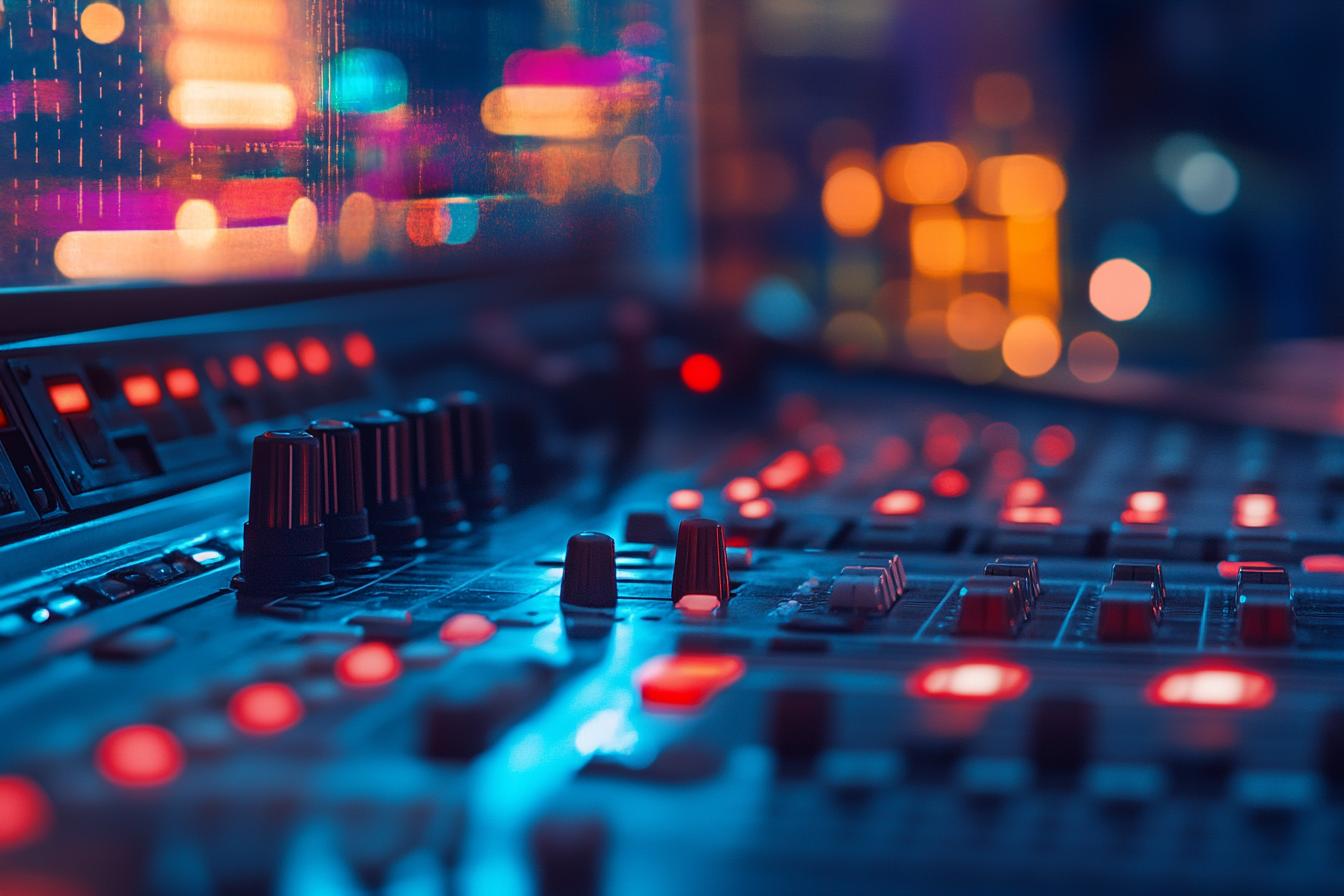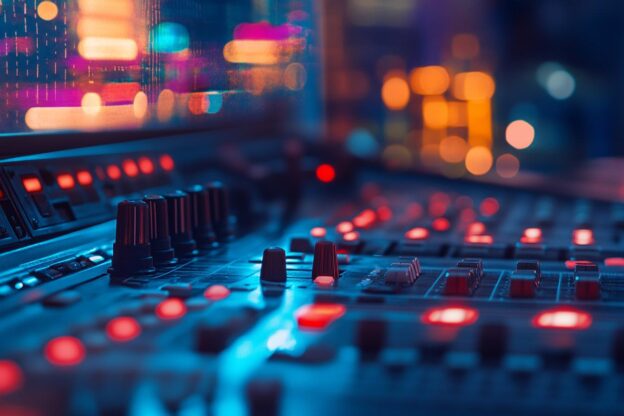Radio news engineering is the fascinating field that bridges the gap between the world of journalism and the technical intricacies of broadcasting. It involves the skillful use of audio equipment, software, and networks to capture, process, and deliver news content to listeners. Imagine a breaking news story unfolding, and within minutes, it’s being broadcast across the airwaves. This seamless process is made possible by the tireless work of radio news engineers who ensure that the audio quality is pristine, the transmission is reliable, and the signal reaches audiences far and wide. From the microphones capturing the reporter’s voice to the transmitters beaming the signal, radio news engineers are the unsung heroes behind the scenes, ensuring that the news reaches our ears with clarity and immediacy.
The work of a radio news engineer is diverse and challenging. They might be tasked with setting up a remote broadcast location, troubleshooting technical issues in the studio, or mastering audio recordings for a news bulletin. A radio news engineer needs to be a master of audio technology, a problem solver, and a quick thinker, as they often have to adapt to unexpected situations. For example, if a live interview is interrupted by a power outage, a radio news engineer might have to quickly switch to a backup system or find a way to continue the interview using a mobile phone. It’s a dynamic field that requires a blend of technical expertise and a passion for delivering news to the public.

Radio News Engineering
1. Radio News Engineering
Radio news engineering is a fascinating field that blends the worlds of journalism and technology. It involves using technical expertise to ensure the smooth delivery of news broadcasts over the airwaves. Radio news engineers are responsible for maintaining and operating the complex equipment that transmits audio signals, from microphones to transmitters. This includes troubleshooting technical issues, setting up recording sessions, and ensuring the quality of the audio signal. They also play a crucial role in developing and implementing new technologies that enhance the radio news experience, such as digital audio broadcasting and streaming services.
Moreover, radio news engineers work closely with journalists to understand their needs and provide them with the technical support they require. They might collaborate on live broadcasts, assist with remote recordings, and even help with the creation of engaging audio content. Radio news engineering is an essential component of the radio news industry, ensuring that listeners receive accurate and timely information through clear and reliable audio transmissions.
2. Audio production for broadcast
Audio production for broadcast is the process of creating high-quality audio content specifically for radio, television, or online streaming. This involves capturing, editing, and mixing audio recordings to ensure clear, engaging, and professional sound. Radio news engineers play a crucial role in this process, as they are responsible for recording interviews, editing sound bites, and mixing audio elements to create a polished and compelling broadcast.
Radio news engineers use various tools and techniques to achieve high-quality audio production. This includes microphones, audio interfaces, digital audio workstations (DAWs), and audio editing software. They carefully select the right microphones for different recording scenarios, ensuring optimal sound quality. Furthermore, they employ editing techniques to remove unwanted noise, adjust audio levels, and create seamless transitions between different audio elements. By mastering these skills, radio news engineers contribute significantly to the overall quality and impact of broadcast audio content.
3. Signal transmission and reception
Imagine you’re talking to a friend across a crowded room. You have to speak loudly and clearly for them to hear you. Radio waves work similarly, but instead of sound waves, they carry information encoded as electromagnetic signals. These signals travel through the air at the speed of light, reaching antennas that act as receivers. Think of an antenna like a giant ear, picking up these signals and converting them back into usable information.
Now, how do we send these signals in the first place? A transmitter generates radio waves by creating an oscillating electric current. This current vibrates at a specific frequency, which determines the type of radio wave. The transmitter then amplifies these waves and sends them out into the air. These waves travel through the atmosphere, bouncing off objects and traveling around corners, until they reach the receiver’s antenna, completing the communication cycle.
4. Studio and field equipment
Radio news professionals rely on a variety of equipment to gather and deliver information. In the studio, this includes audio mixers for managing sound levels, microphones for capturing voices, and computers for editing and playing back audio. These tools allow for the creation of professional-sounding news broadcasts, ensuring clear and engaging delivery of information to listeners.
Beyond the studio, reporters use portable audio recorders to capture interviews and soundbites in the field. These recorders often feature microphones and headphones, enabling journalists to record high-quality audio even in challenging environments. Mobile phones also play an increasingly important role in radio news, allowing reporters to quickly send audio updates and connect with sources remotely. This combination of studio and field equipment empowers radio news professionals to deliver timely and compelling stories to their audiences.
5. Digital Audio Workflows
Digital audio workflows have revolutionized radio news production. Instead of relying solely on analog equipment, newsrooms now use computers and software to record, edit, and distribute audio. This transition has brought numerous benefits, including improved audio quality, enhanced editing capabilities, and streamlined production processes. For example, digital audio workstations (DAWs) allow for precise editing, adding effects, and even creating complex audio mixes with ease. Furthermore, digital audio files can be easily shared and archived, making collaboration and long-term storage more efficient.
The shift to digital audio workflows has also opened up new possibilities for radio news. News organizations can now utilize internet-based platforms for live streaming and on-demand content delivery. This allows them to reach a wider audience and engage with listeners in new ways. Moreover, digital audio workflows facilitate the integration of multimedia elements, such as photos, videos, and social media content, into radio news broadcasts. These advancements are transforming the way news is produced and consumed, making radio news more engaging and accessible than ever before.
6. News gathering and reporting
News gathering and reporting form the backbone of radio news. Reporters and producers actively seek out information, conduct interviews, and verify facts to create compelling and informative stories for listeners. They utilize various tools and techniques, including press releases, social media, and direct observation, to gather information. This process ensures that radio news remains relevant and accurate, keeping listeners informed about current events and issues.
Once information is gathered, reporters craft stories that are engaging and easy to understand. They use clear and concise language, vivid descriptions, and compelling sound elements to bring stories to life. Radio news reporting also often involves interviewing experts and witnesses to provide context and perspective on events. The goal is to deliver information in a way that is both informative and entertaining, capturing the attention of listeners and fostering a connection with the stories they hear.
Conclusions
So there you have it! From crafting compelling news stories to mastering the technical ins and outs of broadcasting, radio news is a fascinating field that combines creativity and technology. We’ve explored how radio engineers ensure crisp, clear audio, how audio producers bring stories to life, and how signals travel seamlessly from the studio to your ears. We’ve even delved into the cool equipment used in the studio and out in the field, and how digital technology is changing the game. And, of course, we can’t forget about the vital role of news gathering and reporting, which keeps listeners informed and connected to the world around them.
Whether you’re a budding journalist, a tech enthusiast, or simply a curious listener, understanding the world of radio news gives you a deeper appreciation for the stories we hear every day. So, next time you tune in, take a moment to consider the journey your favorite news program takes, from the reporter’s microphone to your radio speaker. It’s a journey filled with passion, skill, and a whole lot of technology!
